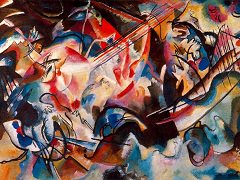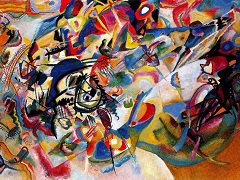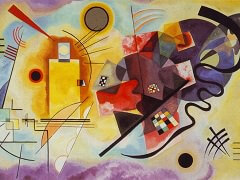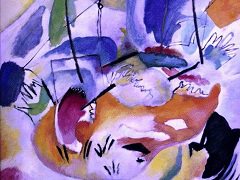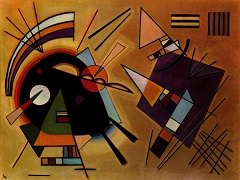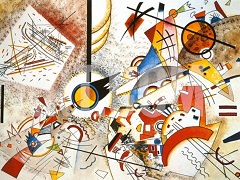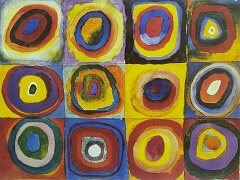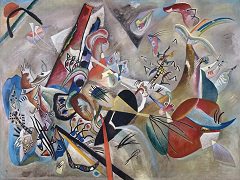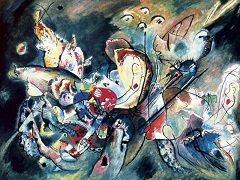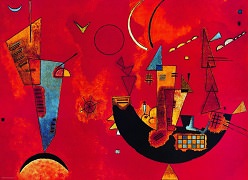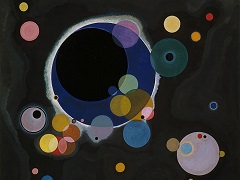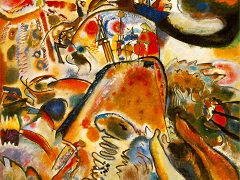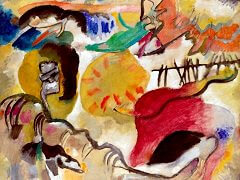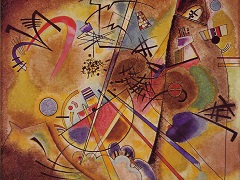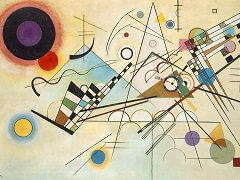Points, 1920 by Wassily Kandinsky

Wassily Kandinsky created Points in 1920. In his writings, Kandinsky analyzed the geometrical elements which make up every painting - the point and the line. He called the physical support and the material surface on which the artist draws or paints the basic plane, or BP. He did not analyze them objectively, but from the point of view of their inner effect on the observer.
A point is a small bit of colour put by the artist on the canvas. It is neither a geometric point nor a mathematical abstraction; it is extension, form and colour. This form can be a square, a triangle, a circle, a star or something more complex. The point is the most concise form but, according to its placement on the basic plane, it will take a different tonality. It can be isolated or resonate with other points or lines.
A line is the product of a force which has been applied in a given direction: the force exerted on the pencil or paintbrush by the artist. The produced linear forms may be of several types: a straight line, which results from a unique force applied in a single direction; an angular line, resulting from the alternation of two forces in different directions, or a curved (or wave-like) line, produced by the effect of two forces acting simultaneously. A plane may be obtained by condensation (from a line rotated around one of its ends).
The subjective effect produced by a line depends on its orientation: a horizontal line corresponds with the ground on which man rests and moves; it possesses a dark and cold affective tonality similar to black or blue. A vertical line corresponds with height, and offers no support; it possesses a luminous, warm tonality close to white and yellow. A diagonal possesses a more-or-less warm (or cold) tonality, according to its inclination toward the horizontal or the vertical.

